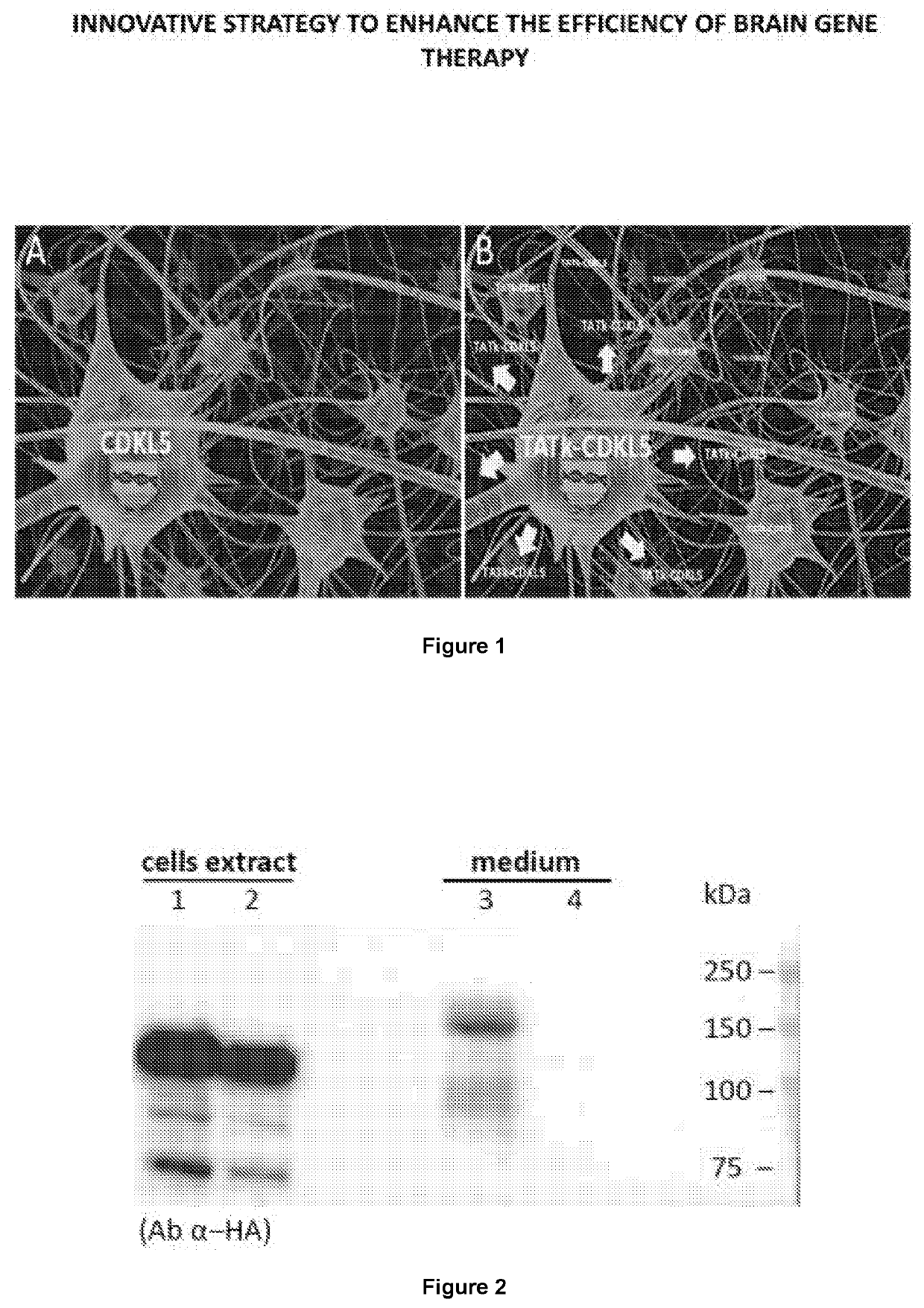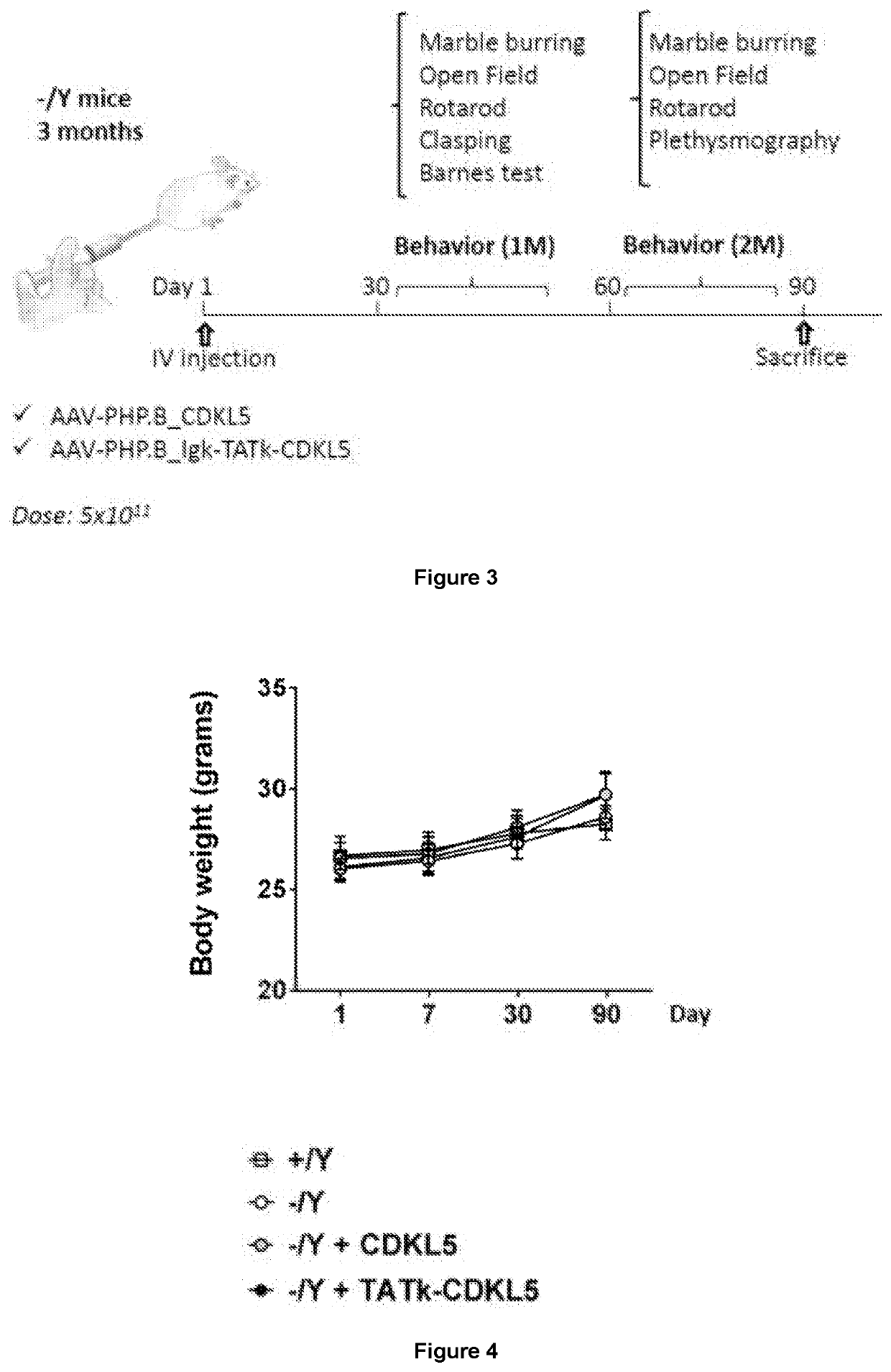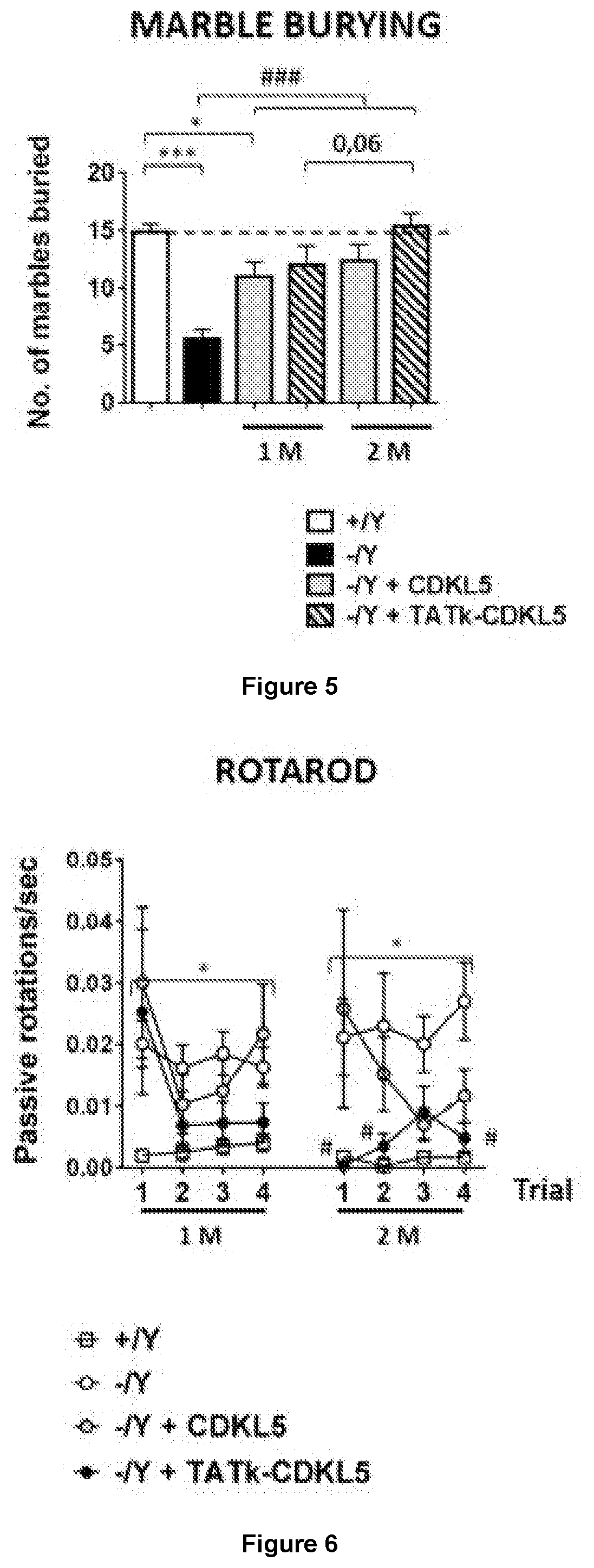New gene therapy constructs
a gene therapy and construct technology, applied in the direction of dsdna viruses, drug compositions, genetic material ingredients, etc., can solve the problems of gene therapy not without risks for patients, limited gene delivery strategies, and several fatal drawbacks of treatment with gene therapy vectors, so as to reduce viral load and/or the number of infections
- Summary
- Abstract
- Description
- Claims
- Application Information
AI Technical Summary
Benefits of technology
Problems solved by technology
Method used
Image
Examples
examples
General Protocol for AAV Viral Particle Production
[0125]AAV vectors were produced in HEK 293 cells by an adenovirus-free plasmid transfection method (Matsushita T, Elliger S, Elliger C, Podsakoff G, Villarreal L, Kurtzman G J, Iwaki Y, Colosi P. 1998. Adeno-associated virus vectors can be efficiently produced without helper virus. Gene Ther 5:938-945) with modification on a scale of 1 to 2-liter culture. If brief, HEK 293 cells (AAV-293) were purchased from Agilent (AAV-293 cells) and were grown in Dulbecco's modified Eagle's medium (DMEM) (Lonza, Basel, Switzerland) supplemented with 10% fetal bovine serum (FBS), L-glutamine, and penicillin-streptomycin. Immediately before plasmid DNA transfection, the culture media were changed to serum-free media. The following three plasmids were transfected at a 1:1:1 ratio in HEK293 cells using the standard polyethyleneimine (PEI) (1 mg / mL) DNA transfection procedure at a DNA:PEI weight ratio of 1:2. The three plasmids used for AAV vector prod...
PUM
| Property | Measurement | Unit |
|---|---|---|
| Composition | aaaaa | aaaaa |
| Therapeutic | aaaaa | aaaaa |
Abstract
Description
Claims
Application Information
 Login to View More
Login to View More - R&D
- Intellectual Property
- Life Sciences
- Materials
- Tech Scout
- Unparalleled Data Quality
- Higher Quality Content
- 60% Fewer Hallucinations
Browse by: Latest US Patents, China's latest patents, Technical Efficacy Thesaurus, Application Domain, Technology Topic, Popular Technical Reports.
© 2025 PatSnap. All rights reserved.Legal|Privacy policy|Modern Slavery Act Transparency Statement|Sitemap|About US| Contact US: help@patsnap.com



